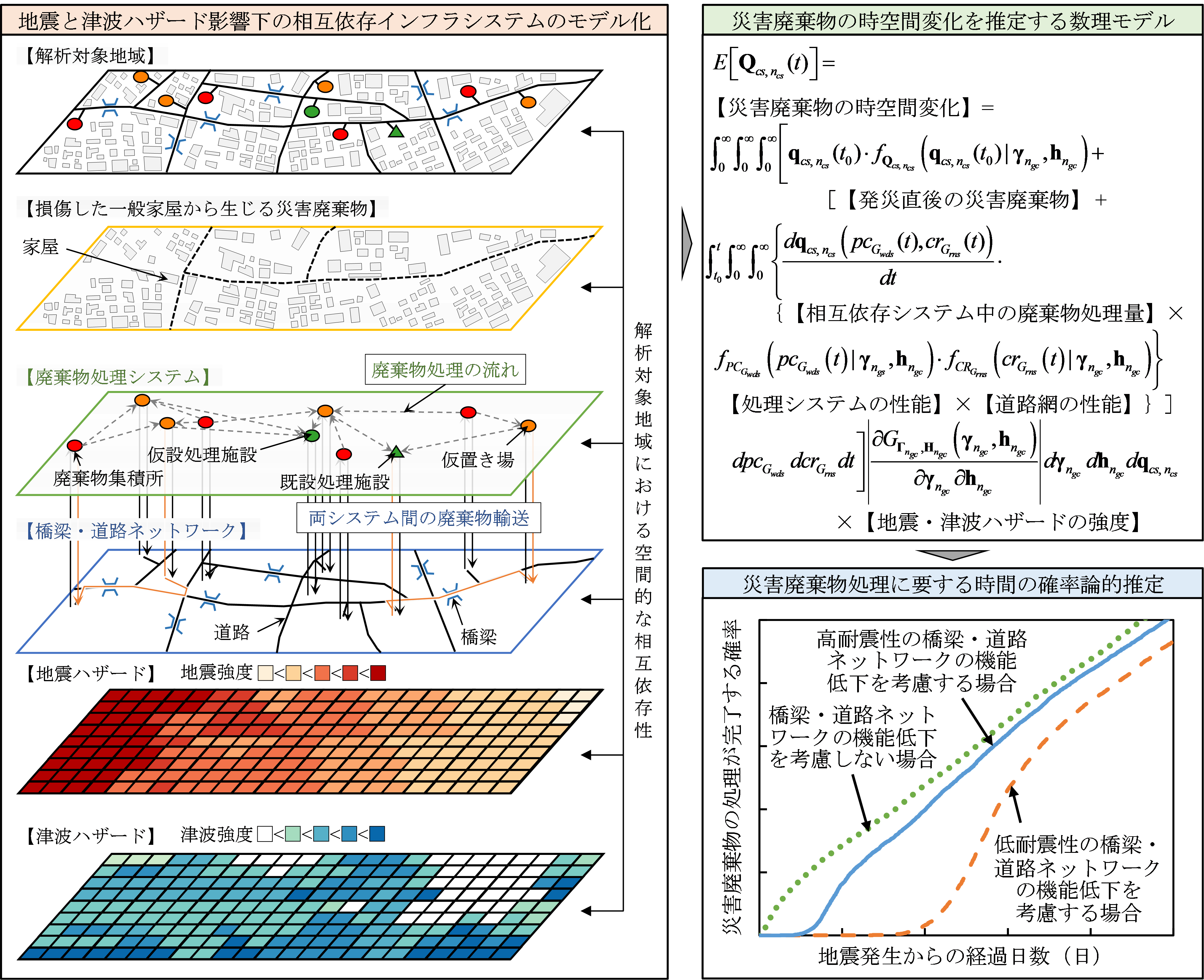2025-06-05 早稲田大学

図 本研究による災害廃棄物の量と処理時間を算定する数理手法の概要
<関連情報>
- https://www.waseda.jp/inst/research/news/80996
- https://www.sciencedirect.com/science/article/pii/S0951832025004430
沿岸地域における地震・津波災害時の廃棄物処理システムと道路ネットワークシステムの相互依存性を考慮した災害廃棄物処理時間のレジリエンスに基づく推定 Resilience-based estimation of the disaster waste disposal time considering interdependencies between waste disposal and road network systems under seismic and tsunami hazards in coastal communities
Koki Aoki, Mitsuyoshi Akiyama, Abdul Kadir Alhamid, Dan M. Frangopol, Shunichi Koshimura
Reliability Engineering & System Safety Available online: 14 May 2025
DOI:https://doi.org/10.1016/j.ress.2025.111242
Highlights
- A resilience-based method is proposed for assessing disaster waste disposal time.
- Interdependencies between waste disposal and road network systems are investigated.
- Impacts of seismic and tsunami hazards on the resilience of two systems are estimated.
- Uncertainties in waste disposal are integrated by the total probability theorem.
- Measures for rapid disaster waste removal and resilience enhancement are discussed.
Abstract
Tsunamigenic earthquakes have triggered damage to structures and infrastructure systems due to both ground motion and subsequent tsunamis, resulting in a huge amount of disaster waste. Since the disaster waste must be processed and transported through both the waste disposal system (WDS) and the road network system (RNS), the functionality loss of the two systems subjected to spatially correlated ground motion and tsunamis hinders the disaster waste removal. Therefore, disaster waste management must be developed by considering the effects of the cascading hazards on not only the capacity of processing facilities, but also the time required to transport disaster waste to the processing facilities (i.e., the interdependency between WDS and RNS). This paper presents a framework for estimating the disaster waste disposal time considering the interdependency between WDS and RNS under seismic and tsunami hazards. As a measure of a coastal community resilience after the occurrence of a strong earthquake, the probability of waste disposal completion at a time elapsed from the earthquake occurrence is estimated considering the uncertainties associated with predicting the time-dependent functionalities of the two systems. As an illustrative example, the proposed framework is applied to a coastal community in Mie Prefecture, Japan, to investigate the effects of the interdependency between the two systems on the disaster waste disposal time.



